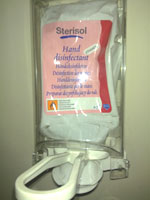

When a tooth is fractured, has a large old filling, or is severely damaged by decay, your dentist may recommend the placement of a crown. Dental crowns can also be used as finishing touches for root canal treatment and dental implants. Types of crowns include the full porcelain crown, the porcelain-fused-to-metal crown (precious & non-precious) and the all-metal crown.
The creation and placement of a dental crown usually requires two appointments. Once we've determined that a crown is the right choice for your smile, carefully prepares the tooth and takes impressions with help from his staff. He provides a similar temporary piece so your confidence and complete smile isn't disrupted while we wait for your permanent restoration from the lab. Once we've received your customized crown, we'll call you back to snugly place it over the tooth and ensure that it's comfortable and secure.
The material your crown will be crafted from depends on its location in the mouth and the amount of stress it incurs on a daily basis. We are happy to offer all-ceramic, tooth-colored options so patients enjoy a beautiful, natural-looking smile.

When tooth loss occurs, your dentist may recommend the placement of a bridge. A bridge is one or more replacement teeth anchored by one or more crowns on each side. The final result is lifelike and durable. There are several types of bridges. You and your dentist will discuss the best options for your particular case. The "traditional bridge" is the most popular type and is usually made of porcelain fused to metal.
Getting a bridge usually requires two or more visits. While the teeth are numb, the two anchoring teeth are prepared by removing a portion of enamel to allow for a crown. Next, a highly accurate impression (mould) is made which will be sent to a dental laboratory where the bridge will be fabricated. In a-ddition, a temporary bridge will be made and worn for several weeks until your next appointment.
At the second visit, your permanent bridge will be carefully checked, adjusted, and cemented to achieve a proper fit. Occasionally your dentist may only temporarily cement the bridge, allowing your teeth and tissue time to get used to the new bridge. The new bridge will be permanently cemented at a later time.
You will receive care instructions at the conclusion of the procedure. Proper brushing, flossing and regular dental visits will aid in the life of your new permanent bridge.



